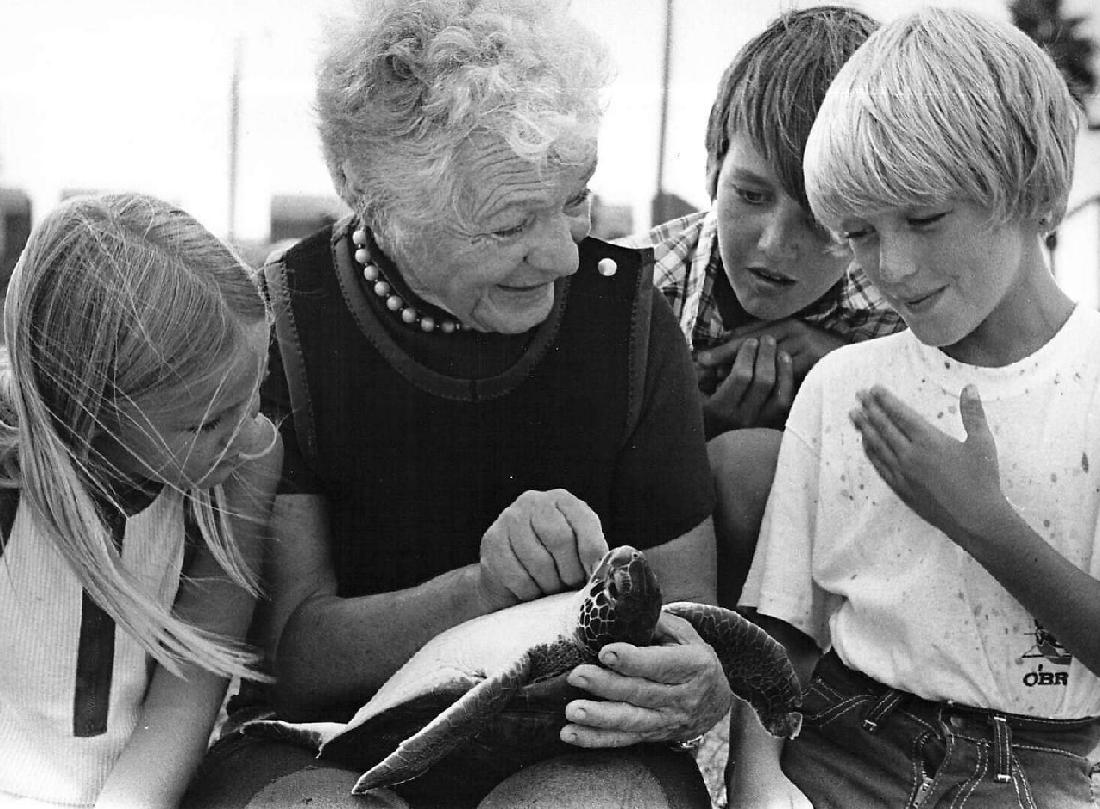 Figure 1.-- Sea turtles are some of the many endngered specices which have benefitted by the Anerican 1973 Endangered Species Act. This lady was involved in turtle conservation in Texas and is working with school children during the 1970s. |

|
An endangered species is an organism that is threatened by extinction. Species become endangered for several reasons, particularly important are climate change and loss of habitat. These factors are related. Another issue is loss of genetic variation. Countless species have come and gone since life appeared on earth (3.5-2.7 billion years BP--before present). Major causes were extraterrestrial events, such as pulsars or collisions, the most famous being the Chicxulub asteroid collision off Yucatan that killed the dinosaurs (66 million BP). All this had nothing to do with humans. Modern humans only appeared very recently in geological terms (about 315 thousand years BP). Astronomically modern human with advanced brain shapes are even more recent (about 100 thousand years BP). Organisms have played important roles in extinctions as evolution crafted species that could better compete. Humans are no exception. Today the primary focus is on human activity, especially loss of habitat and technology. It should not be thought, however, that industrial technology is the only threat. It is likely that humans are responsible for the disappearance of mega-fauna (50-10 thousand years BP). This occurred at the end of the last Ice Age. All at about the same time as the human colonization of the farthest regions in the human migration out of Africa. The last step was the destruction of mega-fauna in the Americas by Proto-Indians (20-10 thousand BP). The reason for these mass extinctions are controversial, but include climate change and human interactions, probably a combination of the two. Humans did this with what we would consider basis technology, but actually very advanced technology at the time. As human technology advanced, so did impacts on the environment with potentially devastating consequences. The Maya are believed to have declined because they destroyed their environment (1,000-800 AD). Humans only began noting extinctions recently. The most noted was the dodo (1681). Major Human impacts on the environment increased with the Industrial Revolution beginning in England (mid-18th century). America as in other areas like democracy, religious freedom, individual rights, ethnic diversity, economics, and feminism, led thinking on environmental issues. (Something Marxist professors in universities seek to hide.) The United States at the dawn of the 19th century was a very young country facing a vast largely unsettled country. Americans led in many ways by President Jefferson began thinking about made their new country unique from their European origins--the beginning of American exceptionalism. Many ideas were discussed, especially democracy and liberty, but the landscape also emerged, most clearly expressed in art--beginning with the Hudson River School. The focus of course as on settlement, but a critical early step was actions by President Lincoln and the Republican Congress to protect natural treasures. Lincoln signed legislation formally handing Yosemite Valley and the nearby giant sequoia groves to the state government of California, forbidding private ownership of that land (1864). It was a precedent setting step. The first state park was Yosemite. Supreme Court decisions were needed to address the issue of private property. Congress created Yellowstone as the first national park (1872). Of course this was not species protection, but habitat protection was vital for species protection. One of the greatest symbols of the American frontier was the buffalo, more correctly the bison, driven to near-extinction by hunters and the railways. The Government made no attempt to save the buffalo, but fortunately James 'Scotty' Philip, a Dakota rancher built up a heard (late-19th century). A species with caused particular concern was the slaughter of Florida egrets to near extinction in the name of fashionable women's hats (late-19th century). This in part helped launch the modern environmental movement--often called conservation at the time. The Audubon Society was the first important environmental group. President Theodore Roosevelt took a special interest in conservation. He created the national park system and set restrictions on the use of natural resources. Thus was part of his progressive agenda. The first critical steps in protecting species were also taken by America. An important early step was the International Fur Seal Treaty protecting fur seals and otters (1911). President Nixon signed the Marine Mammal Protection Act (1972) and the Endangered Species Act (1973). These acts were important not only for American wildlife, but wildlife worldwide because endangered species products like ivory and products damaging wildlife like tuna being sold in America. Since then other countries have followed suit, especially Britain and the European Union. Jpan resisted on somed time, especilly with protecting marine mnml. Other countries like China have continued resisting adopting needed policies.
Navigate the Children in History Website:
[Return to the Main Environmental Issues page]
[Introduction][Biographies][Chronology][Clothing][Disease and Health][Economics][Environmental Issues][Geography][History][Human Nature][Law]
[Nationalism][Presidents][Religion][Royalty][Science][Social Class]
[Bibliographies][Contributions][FAQs][Glossaries][Images][Links][Registration][Tools]
[Children in History Home]
